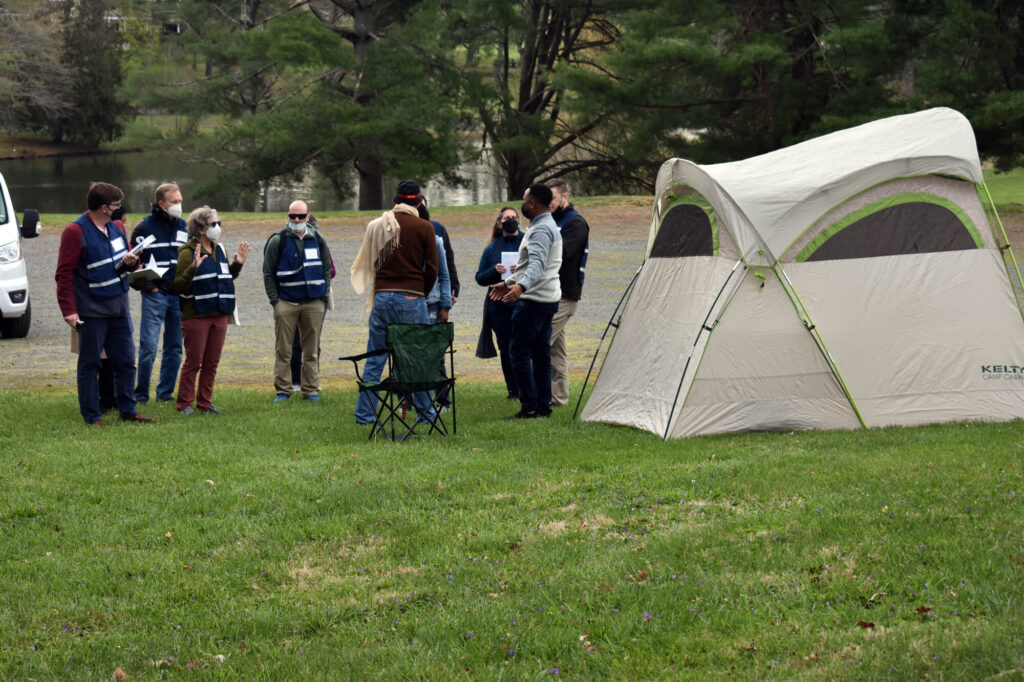International Medical Corps has always placed a special priority on training since our founding. Training young Afghan men in the mid-1980s as paramedics was at the heart of our very first program nearly four decades ago.
In the years since, almost every operational program we have undertaken has included a training component—but throughout those years only one entity within the organization has had a mission devoted solely to the task of improving the humanitarian sector’s collective response to major disasters: the Humanitarian Response Training Unit, or HRTU.
The HRTU offers training to staff from a wide range of humanitarian groups—including those from international, national and local NGOs, local and national governments, and UN agencies—on how to operate in the world’s most complex humanitarian emergencies, such as Ethiopia, Syria and Yemen, among others. The training provided by the HRTU enhances the knowledge, skills and operating capacity of those involved, making them better equipped to navigate the complex and sometimes confusing global humanitarian response system.
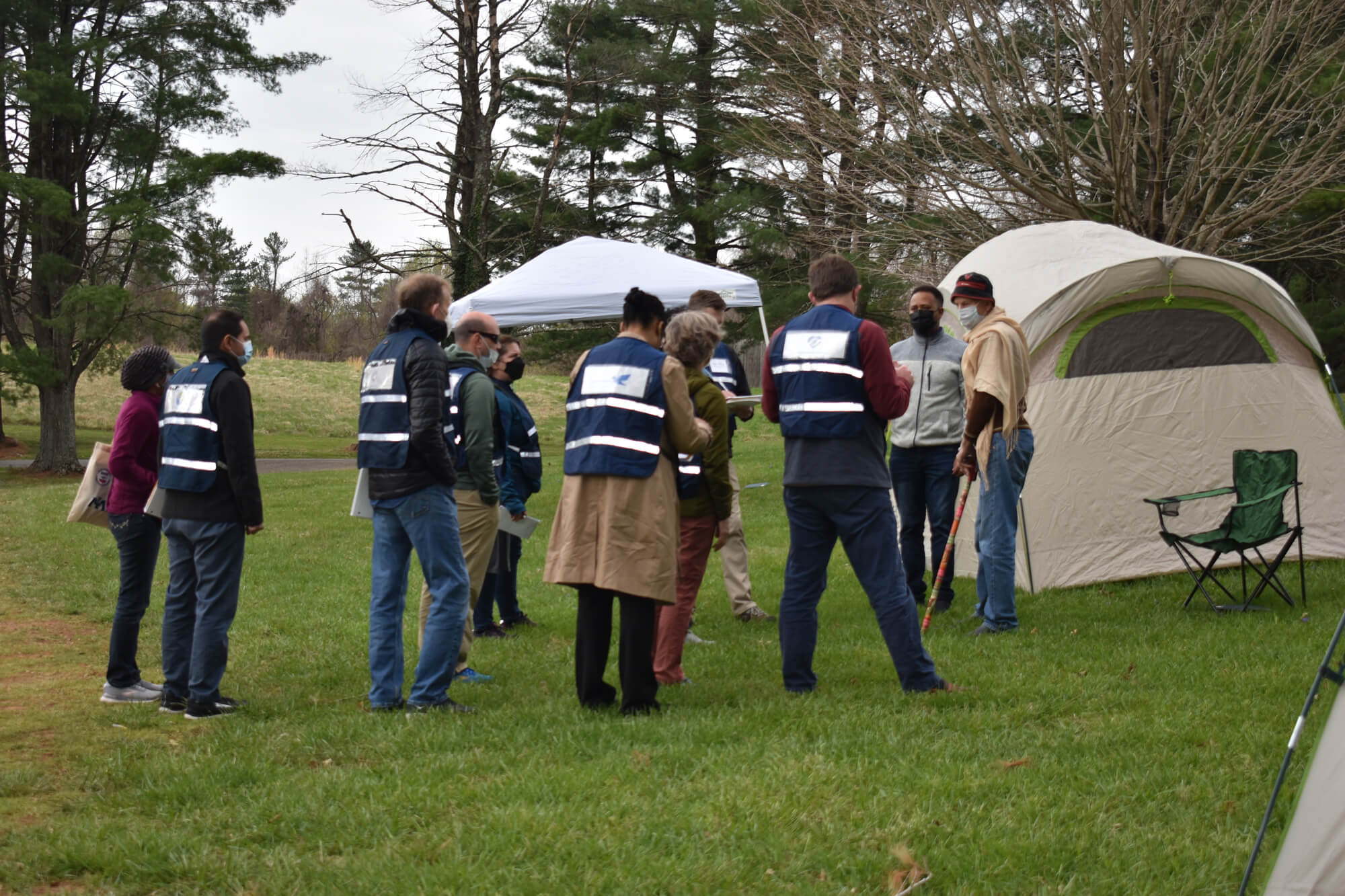
Drawing on International Medical Corps’ years of experience, the HRTU plays a unique role in building a more effective, more inclusive humanitarian response that involves more local organizations and workers—those who live and work closest to an emergency. The HRTU’s job is to familiarize them with the international humanitarian architecture and to help strengthen internal organizational emergency response systems and processes. Local organizations’ familiarity with local conditions—their knowledge of how to navigate cultural, social and religious traditions and other potential barriers—enables them to be critical leaders and providers of lifesaving assistance.
Ideally, this is done in calmer times, so such organizations are better able to respond immediately when disaster strikes.
Our work in this area has expanded since our initial projects 15 years ago, supported by the World Health Organization and UNHCR, the UN’s refugee agency. After providing training to NGO members of the Global Health Cluster and, later, to national NGOs in emergency response, we implemented several other projects focused on coordination and capacity development. This eventually led to the establishment of the HRTU, which consolidated our response-training programs into one unit.
In 2012, we launched our longest running project, called Building a Better Response (BBR), with the support of USAID. Seeing the need—and value—of making the international humanitarian system more understandable and accessible to all, we joined with Concern Worldwide and the Harvard Humanitarian Initiative to lead this global effort, which is still going on today.
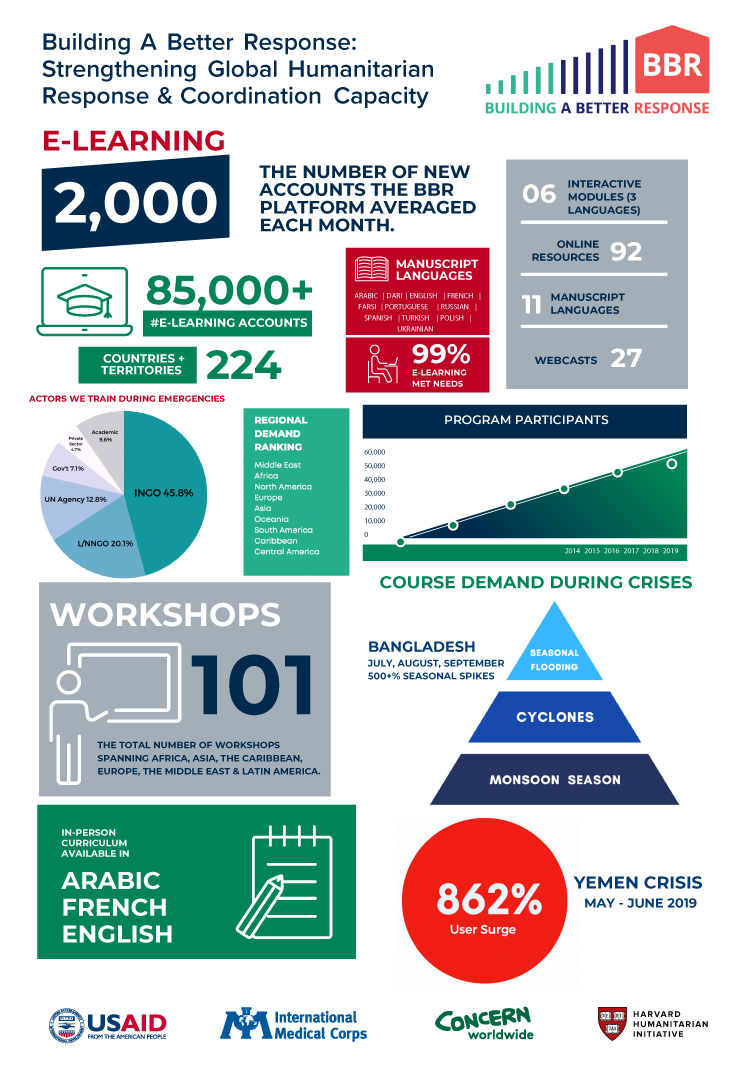
“NGOs needed a stronger voice in coordinating responses, and the BBR program filled that gap,” recalls Angela Wiens, the HRTU’s first director. A veteran of nearly 20 years with International Medical Corps, Angie now serves as Senior Director for Safeguarding, Inclusion and Partnerships in our Department of Domestic and International Affairs.
Since 2012, nearly 90,000 learners in 224 countries and territories have used BBR to improve their knowledge of the humanitarian system. This month, we are introducing a new version of the BBR e-learning tool with new features, updated learning modules, new characters, an updated color palate and new case-study assessments based on real humanitarian emergencies. The new course will be offered in five languages, with transcript translations available in an additional five.
One reason BBR quickly became popular is that it includes input from members of our staff who have experienced firsthand the difficult realities of humanitarian emergencies and the challenges they bring. Humanitarian professionals across a range of local and international NGOs have used BBR as an onboarding tool, and it has served as a key resource in sudden-onset emergencies such as Ukraine, where more than 1,000 users registered for the Polish and Ukrainian versions of the e-learning course within 24 hours of invasion.

“We’ve found that our BBR e-learning user registrations increased dramatically in countries where humanitarian disasters occur,” says Sanja Bebic, the HRTU’s current director and a training specialist with extensive experience in adult learning. In addition to Ukraine, she cites sharp rises in BBR registrations from the Philippines after a series of emergencies that hit the country in the years since BBR was launched, including Typhoon Haiyan in 2013, when there was a 161% jump in registrations; landslides and floods in 2016, when there was a rise of 216%; and a major earthquake in Mindanao in 2019, when there was a 314% increase.
“This correlation suggests that new users turn to BBR for resources and support when a humanitarian situation becomes more dire,” Sanja adds.
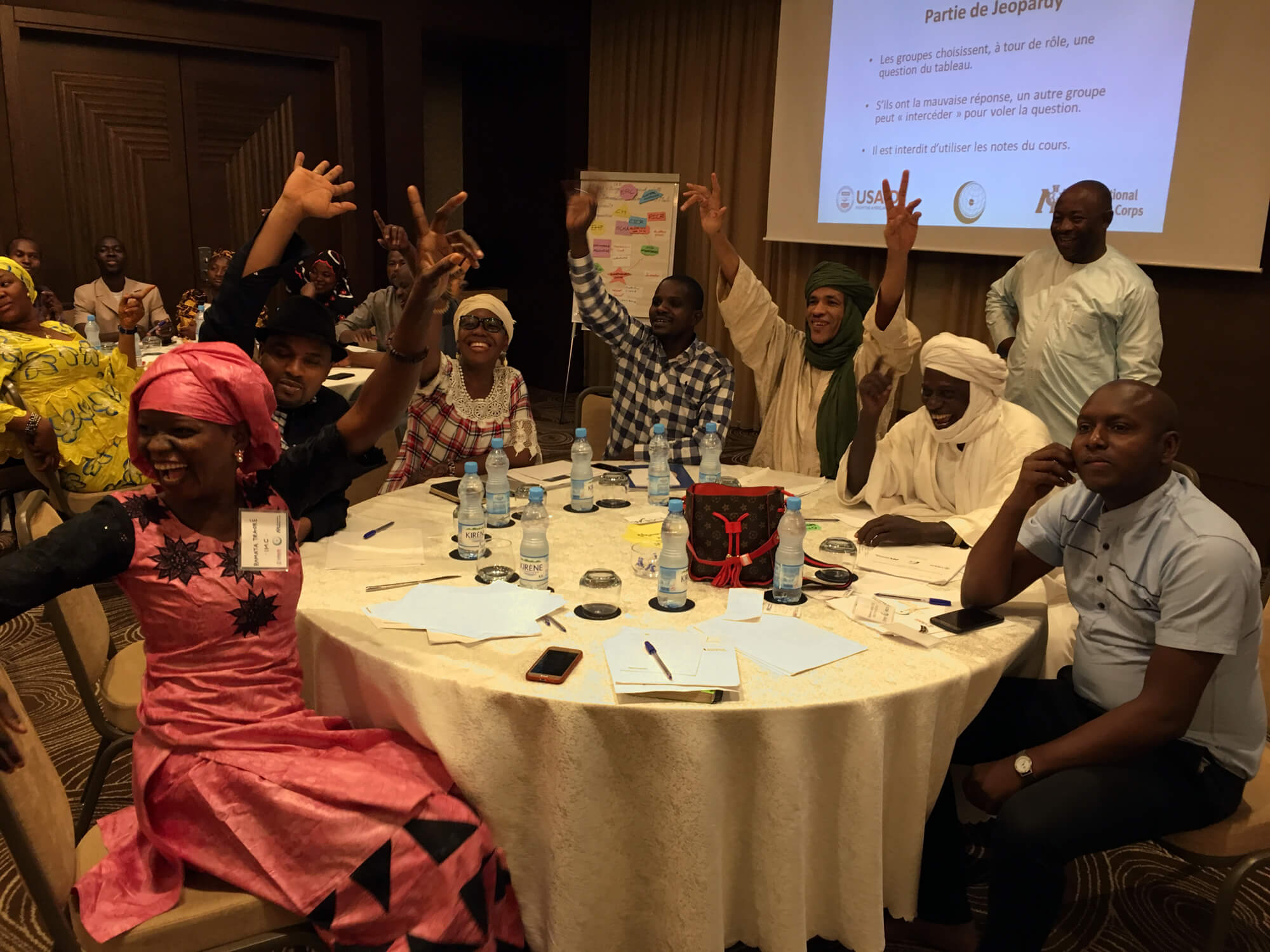
Yazan Karcout, a senior specialist in the HRTU who manages the curricula and implementation for our symposiums and workshops, notes that many presenters and speakers have themselves experienced a humanitarian response firsthand, often from an NGO perspective. He explains that learning flows in both directions—that presenters are impressed with how much they learn from the attendees’ experience, while attendees are often surprised and excited to discover that they can discuss issues in their own language with our diverse group of presenters.
“Creating a vehicle for people to come together and learn from each other is both interesting and inspiring,” says Sanja.
Native languages for the dozen or so HRTU staff include Amharic, Arabic, English and French. The curriculum for in-person gatherings usually is available in Arabic, English and French, while BBR e-learning materials have been translated into 11 languages.
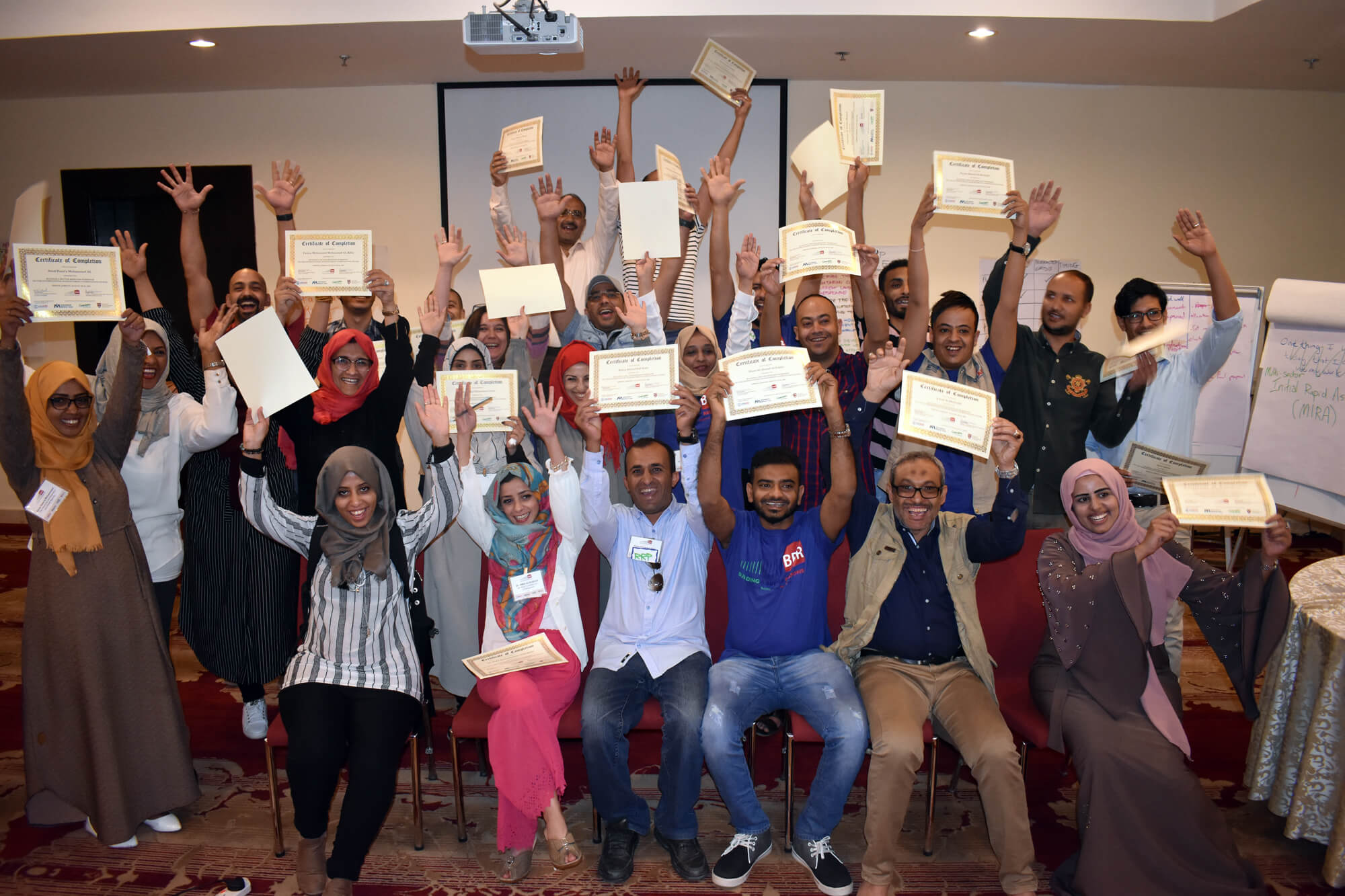
In recent years, the HRTU has added other projects. For example, USAID’s Bureau for Humanitarian Assistance (BHA) has supported our partnership with the Organization of Islamic Cooperation (OIC) to build the emergency response capacity of national NGOs in Africa and the Middle East. We currently work together with Concern Worldwide on a program strengthening response capacity of national NGOs in Africa and South Asia, and we offer a curriculum for promising mid-career managers to strengthen the skills needed to interact effectively within the global humanitarian system. And late last year the HRTU forged a partnership with the International Council of Voluntary Agencies (ICVA) to begin a new project, funded by the French Ministry of Foreign Affairs, supporting national NGOs in the Horn of Africa. The project will expand their ability to respond to humanitarian emergencies, particularly those caused by extreme weather and climate change.
Additionally, for five of the past seven years (COVID precluded them in 2020 and 2021), the HRTU has conducted simulation exercises for staff from a variety of agencies to enable them to better understand the structure of an international response and how local and national governments, UN agencies and NGOs coordinate. Drawing from the expertise of International Medical Corps staff across the organization, exercise planners invite them to serve as trainers to role-play many of those involved in a crisis, including survivors and responders all levels, as they deal with rapidly evolving environment of a humanitarian disaster during the crucial yet chaotic initial 72 hours.
